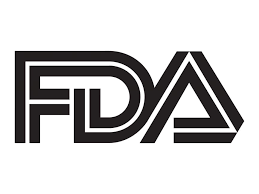Article
FDA Approves Faricimab for Patients with Wet AMD or DME
Author(s):
The approved indication is a first-of-its-kind for a novel therapy—a bispecific antibody injection treatment for the leading causes of blindness.

The US Food and Drug Administration (FDA) has approved faricimab (Vabysmo) for the treatment of adults with neovascular age-related macular degeneration (nAMD) or diabetic macular edema (DME).
The Biologics License Application (BLA) approval granted to Roche makes the intravitreal bispecific antibody angiopoietin-2 (Ang-2) and vascular endothelial growth factor A (VEGF-A) inhibitor the first of its kind indicated for treating ophthalmic disease. More than that, experts have expressed excitement for the introduction of a new drug class that differs in mechanism and benefit from the standard-of-care anti-vascular endothelial growth factor (VEGF) injections.
“Anti-VEGF monotherapies have been fantastic for our field and for our patients—they really changed a lot of lives and saved a lot of vision,” faricimab investigator Charles C. Wykoff, MD, of the Retina Consultants of Texas, told HCPLive. “But there’s been a hope to move beyond anti-VEGF monotherapy for a long time.”
Faricimab’s approval for patients with nAMD or DME was supported by findings from a pair of pivotal phase 3 trials assessing the agent in either patient population: TENAYA and LUCERNE, and YOSEMITE and RHINE, respectively.
In TENAYA and LUCERNE, faricimab met the primary endpoint of non-inferior visual acuity (VA) gains to aflibercept (EYLEA) in both trials: +5.8 and +6.8 letters versus +5.1 and +6.6, respectively.
In YOSEMITE and RHINE, faricimab met the primary endpoint of non-inferior best corrected VA (BCVA) change over 1 year versus aflibercept in both trials: +11.6 and +10.8 versus +10.9 and +10.3, respectively.
Among all 4 trials, good tolerance was observed with faricimab; investigators observed no new or unexpected adverse events. Wykoff did note to HCPLive® an interest in continuing to observe risk of intraocular inflammation in patients with DME treated with faricimab in the two-plus year follow-up YOSEMITE and RHINE trials, but he believes the association is not clinically meaningful.
Wykoff additionally emphasized the observed long-term benefit of faricimab, which was assessed in varying dose regimen schedules for patients with retina disease. As he explained, a key differentiator with the bispecific antibody therapy versus standard-care anti-VEGF treatment is the frequency by which patients have achieved visual acuity improvement with less frequent doses.
“The reason this trial is important is because it gives an indication of the true durability, potentially, in the real world,” Wykoff said. “That’s why it was exciting when we saw over 50% of patients are achieving every 16 weeks dosing, and more than 75% are achieving every 8-12 weeks dosing.”
Speaking specifically to its benefit in treating DME, Wykoff highlighted faricimab's novel targeting of the Ang-2 pathway—which ultimately helps stabilize retinal vasculature, decrease inflammation, and allow for extended treatment durability in patients, he said.
"There’s a lot of basic science data to indicate that especially diabetic macular edema is a multifactorial disease, as characterized by up-regulation in multiple different cytokine pathways," Wykoff explained. "So it’s exciting to have a new molecule that’s capable of both inhibitng the VEGF-A pathway that we’re well aware of, but now bringing in a new pathway into the story.”
Carl Regillo, MD, Director of Retina Service, Wills Eye Hospital and investigator of the TENAYA and LUCERNE trials for faricimab in patients with nAMD, noted in an interview with HCPLive at the American Academy of Ophthalmology (AAO) 2021 Annual Meeting last October that faricimab's efficacy meets that of competitors in both in initial loading phases as well as in maintenance. The key difference is the reduced treatment load required with faricimab.
“The bottom line is these studies show definitively that faricimab works as well as aflibercept in exudative control of nAMD and achieving the vision gains that are well maintained over time after the initial loading phase, but with less frequent treatment,“ Regillo told HCPLive at the American Academy of Ophthalmology (AAO) 2021 Annual Meeting. “Having something that's more durable or longer acting is simply more forgiving, if you will.”
Regillo added that patients would be required to visit the clinicians office less frequently with such a prescription. Joshua Mali, MD, of The Eye Associates, echoed a similar sentiment to HCPLive on a podcast last year. The Florida-based clinician expressed excitement for extended outcomes observed under the unique faricimab treatment regimen.
“It could be a potential game-changer in regards to wet AMD and how we treat patients,” Mali said. “The potential of 16-week dosing is very exciting.”
According to Roche, long-term trials for faricimab are ongoing for both nAMD and DME populations, including the TENAYA and LUCERNE extension study AVONELLE-X as well as the YOSEMITE and RHINE extension study RHONE-X. An additional pair of trials, COMINO and BALATON, are assessing faricimab for efficacy and safety in treating patients with macular edema following retinal vein occlusion.





